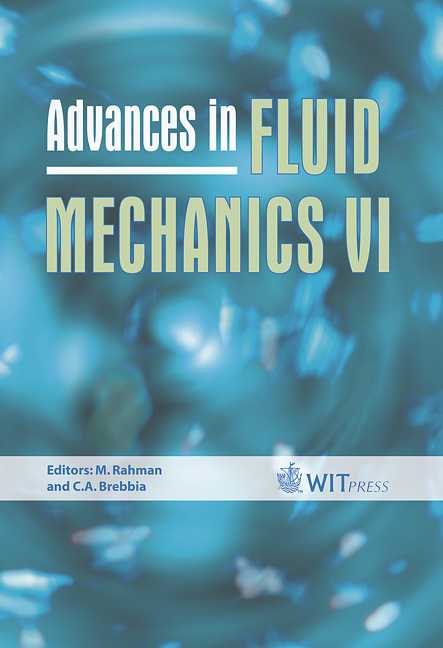Volume Of Fluid Model Applied To Curved Open Channel Flows
Price
Free (open access)
Transaction
Volume
52
Pages
9
Published
2006
Size
647 kb
Paper DOI
10.2495/AFM060361
Copyright
WIT Press
Author(s)
T. Patel & L. Gill
Abstract
An attempt has been made to simulate secondary flows in curved open channels using three-dimensional CFD analysis. Besides the classical center-region cell, a counter rotating outer bank cell is often observed which could play an important role in the mechanism of sediment transport. The CFD analysis is carried out on the 120° curved open channel bend using the commercial software package Fluent. The volume of fluid (VOF) model is used to simulate the air-water interaction at the free surface and the turbulence closure was obtained using the Reynolds stress model (RSM). It is observed that the RSM model was able to predict both circulation cells successfully. The results show that the core of maximum velocities is found close to the separation between both circulation cells and below the free surface which agrees well with the experimental data. Keywords: open channel, secondary flows, computational fluid dynamics, volume of fluid, free surface, turbulence modeling. 1 Introduction Secondary flows are a significant feature of flow in open-channel bends. They are formed due to a local imbalance between the pressure gradient and centrifugal force at any given section. They tend to redistribute the mean velocity, alter the boundary shear stress and erode the outer bank. Most of the research on flows in bends over the past decade has concentrated on the central portion of the flow, whereas the flow characteristic at the outer bank (where a small counter-rotating circulation cell is present) has often been neglected. Earlier studies indicate that the center-region circulation cell has been captured successfully using a two-equation turbulence model. Patel and Gill [1],
Keywords
open channel, secondary flows, computational fluid dynamics, volume of fluid, free surface, turbulence modeling.





